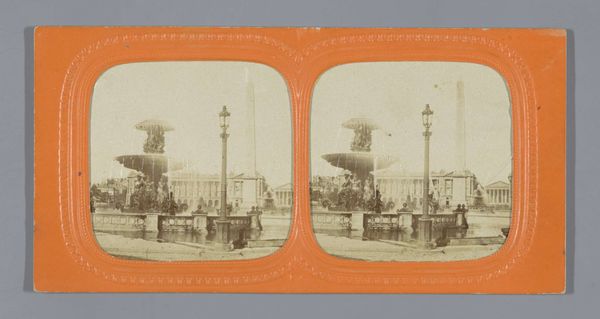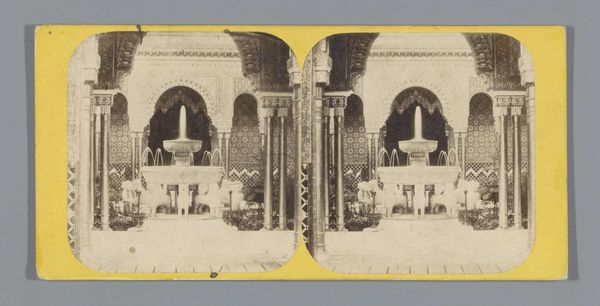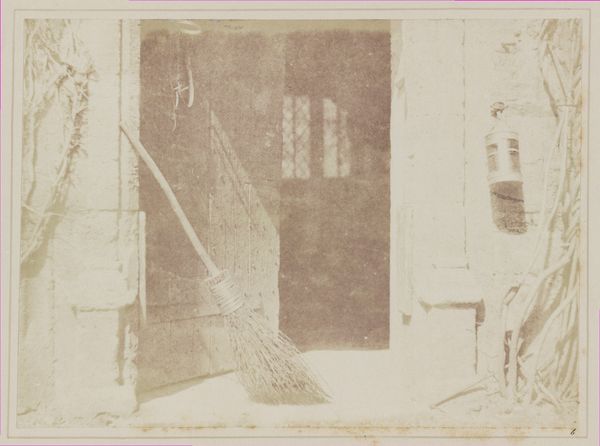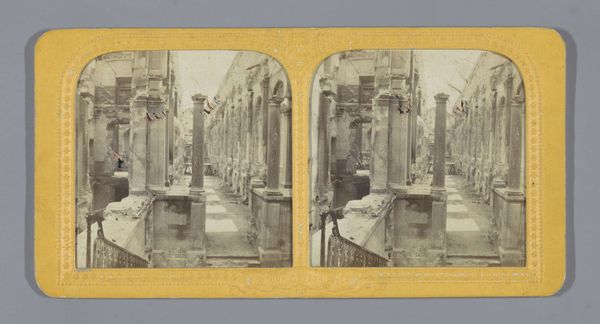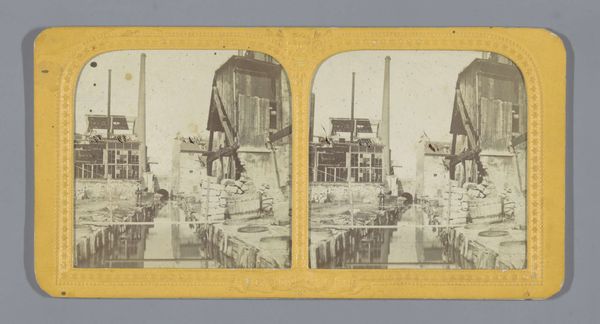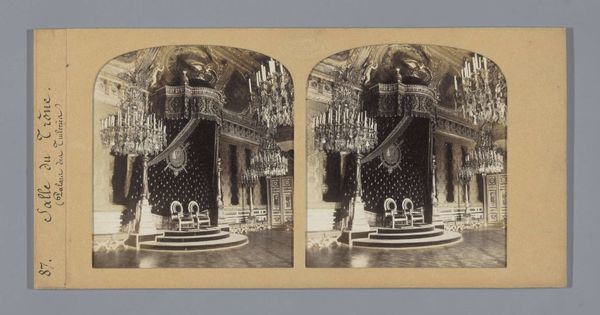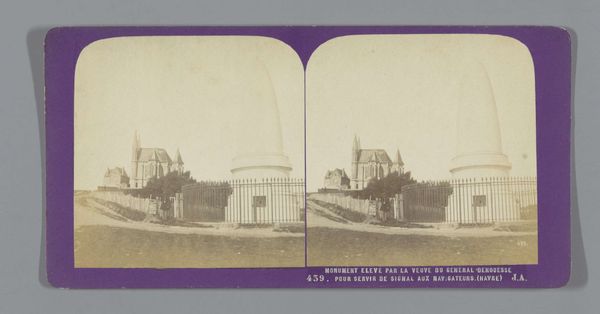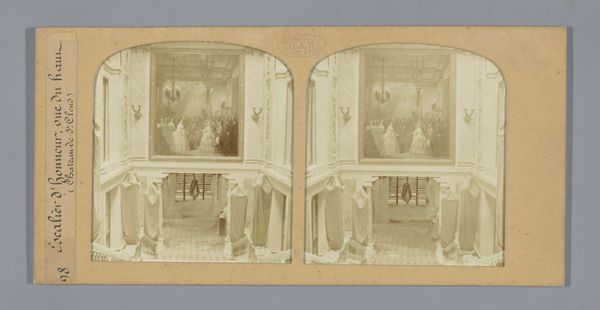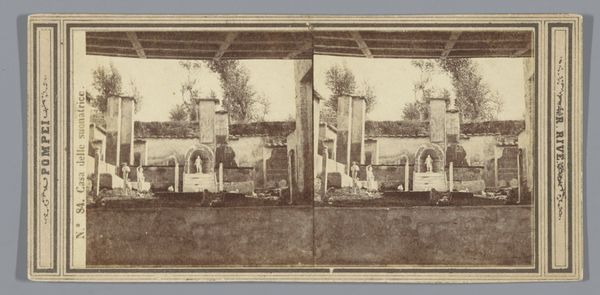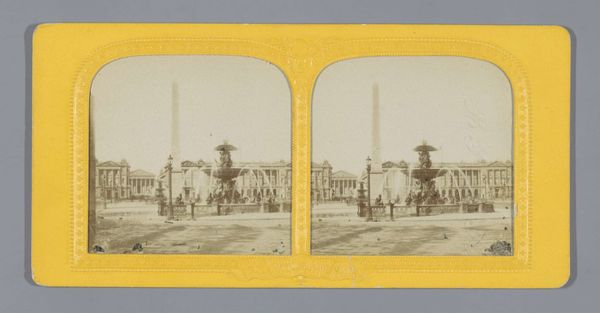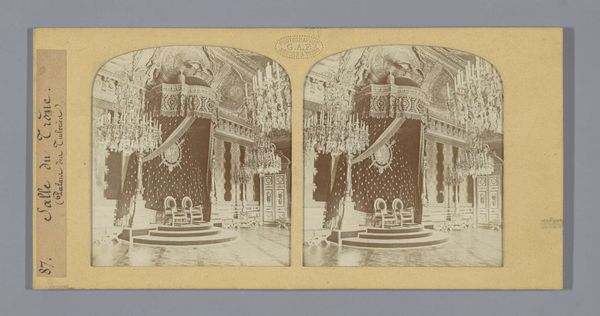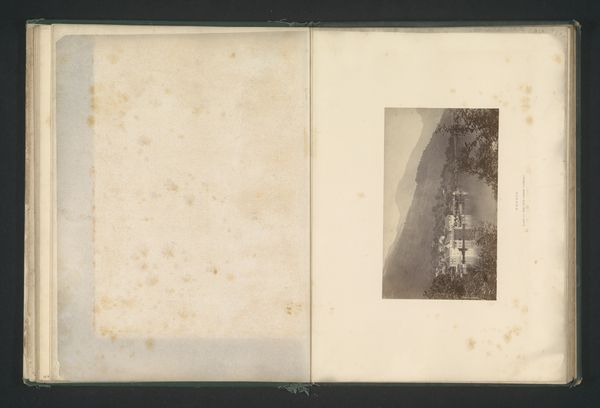
photography, gelatin-silver-print
#
landscape
#
photography
#
rock
#
orientalism
#
gelatin-silver-print
Dimensions: height 88 mm, width 176 mm
Copyright: Rijks Museum: Open Domain
Curator: Allow me to introduce Jean Andrieu's gelatin-silver print, "Rock That Served as a Table for Christ and His Disciples," created sometime between 1872 and 1876. The presentation of this piece immediately strikes me; a double image encased in what looks like decorative bordering. Editor: Yes, the stereoscopic presentation and sepia tones lend an air of faded grandeur and calculated staging to what purports to be a sacred, organic subject matter, or to that end, perhaps something mundane—the scale isn't apparent. It has an antique charm, and at the same time, strikes a solemn mood. What is our eye being guided to? Curator: The composition arranges the central rock as a quasi-architectural base. This then supports an altar-like structure adorned with religious symbols and topped with a shadowed recess that mimics the grotto-like space from which this table would presumably have been formed. It presents the scene as venerated, even commodified, in a very palpable way. We understand the market for this type of image and what the presentation communicates. Editor: Indeed. The sharp lines of the altar juxtapose starkly against the rock's crude mass; an arrangement of the natural versus the man-made, refined belief built directly from a foundational relic. Consider the dual image too—a mirroring of the sacred site designed to offer a perceived three-dimensionality, an appeal to believability through technological representation, if you will. Curator: A canny reading, the doubling of the presentation to re-present as "real." The photograph serves, in its essence, as an artifact itself; something held and exchanged, speaking to notions of authenticity as currency. It does raise intriguing questions about image production and its market during that period in relation to Western fascinations with the 'Orient' or so-called Holy Lands. Editor: Exactly. The piece works on several levels, formally drawing our attention to the layers of symbolism employed by Andrieu but also speaking volumes about its socio-cultural milieu, including, the very colonialist project of appropriation of place, memory, and experience, all packaged within these twin frames. Curator: Looking again at the detail in the photograph itself, the lines, contrasts, even the borders… they are deliberate, calculated, and meant to guide the eye toward specific points. What resonates is not just the 'story' or location, but the structural strength that underpins Andrieu's visual story. Editor: Well, that is the beauty of interrogating something historical like this image; both a window into art history, and into ourselves. The image certainly sparks considerations of the layers of history—religious, art historical, and colonialist. Thank you for lending your insightful perspective.
Comments
No comments
Be the first to comment and join the conversation on the ultimate creative platform.
